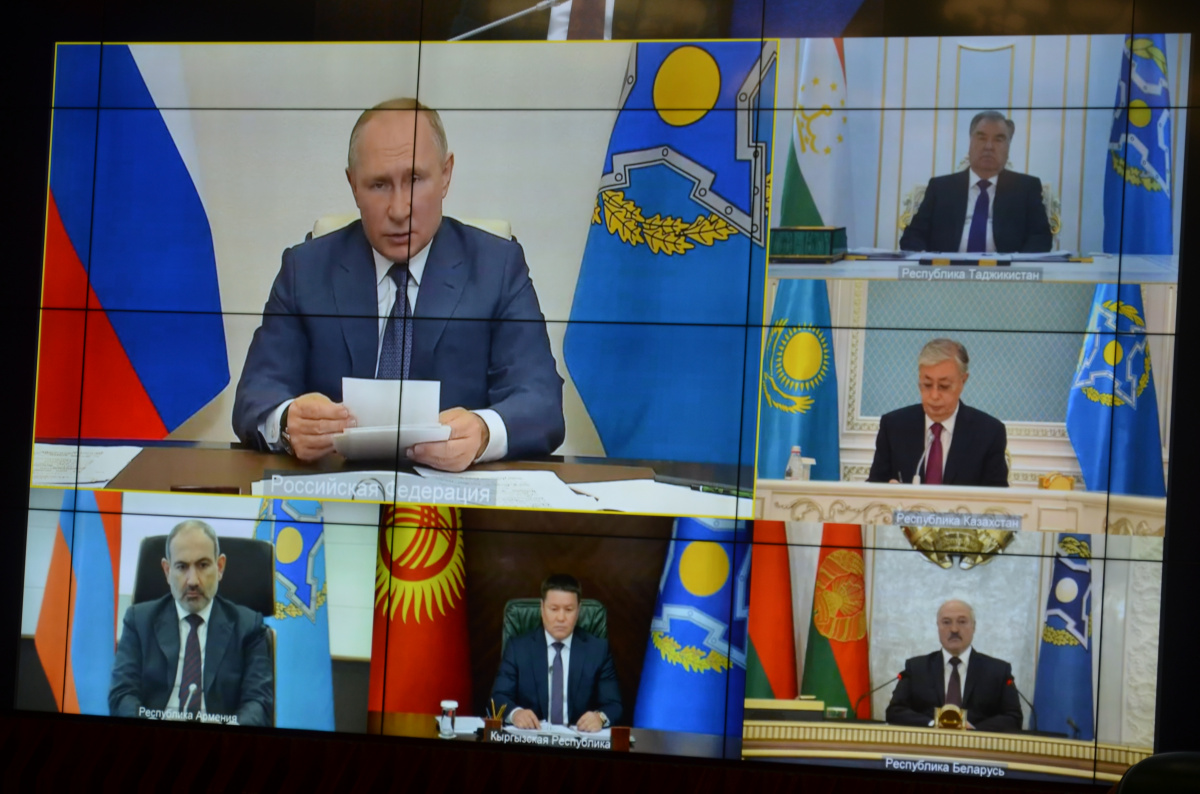
Protests are increasing across Kazakhstan over the hike in fuel prices. And, CSTO or, Collective Security Treaty Organisation is helping Kazakhstan’s president in quelling protestors. Here’s all you need to know about this organization.
What’s happening in Kazakstan?

Kazakstan is seeing several days of unrest with the government’s move for ending subsidies on liquified petroleum gas. On January 6, Belarusian special forces and Russian Paratroopers were seen boarding planes to Almaty. While the decision was taken three years ago, January 1 brought it to force, making fuel market-based. The cost of fuel shot up from 60 tenges to 120 tenges on January 2. Protests first broke out in Zhanzoen and began spreading across the nation. Kassym-Zhomart Tokayev, the President of Kazakstan called the CSTO to help in handling the protests. Soon after soldiers of the collecting began storming the nation in order to curb the protests threatening the existence of the regime.
What is the CSTO?

With the end of the Cold War, the Warsaw Pact dissolved, making Russia and its allies a loose club of post-soviet nations. The now-independent nations signed the Collective Security Treaty that came to force in 1994. While the treaty was not as powerful as the Warsaw pact, it declared itself as the Collective Security Treaty Organisation (CSTO), a military alliance in 2002. Around the same time, America was successful in invading Afghanistan and Central Asia was looming larger in geopolitics.
As of today, the CSTO has six members: Tajikistan, Russia, Krygyzstan, Kazakstan, Belarus and, Armenia. Uzbekistan was the seventh member until it quit in 2012.
More on the group and its function

In the last ten years, the alliance’s ambitions have increased. In 2007, the CSTO started creating a peacekeeping force with 3,600 members. Two years later, it also established a 20,000 elite soldier-stong group. Amidst the growing chaos in Afghanistan, the CSTO started including several ‘anti-terrorism’ drills. However, this week, for the first time, the CSTO invoked Article 4. The move is similar to NATO’s Article 5 stating that the response may include armed force but doesn’t mandate. After all, NATO’s promise is taking “such action as it deems necessary” for restoring peace and providing security. The “means” include anything between a strict diplomatic protest and nuclear war.
The invoking of Article 4 is a result of the President blaming “foreign-trained terrorist gangs” for the protests. Additionally, the move was approved by Nikol Pashinyan, the Armenian president and the holder of the organization’s rotating chair. Armenia, Belarus, Russia, and Tajikistan also agreed to help and send contingents. Moreover, the CSTO is a useful tool for Russia, helping it tighten its grip in the Central Asian region. It also justifies its military facilities and gives a veto over foreign bases in the region. While in return, CSTO members enjoy advanced military forces, discounted arms, and training.


